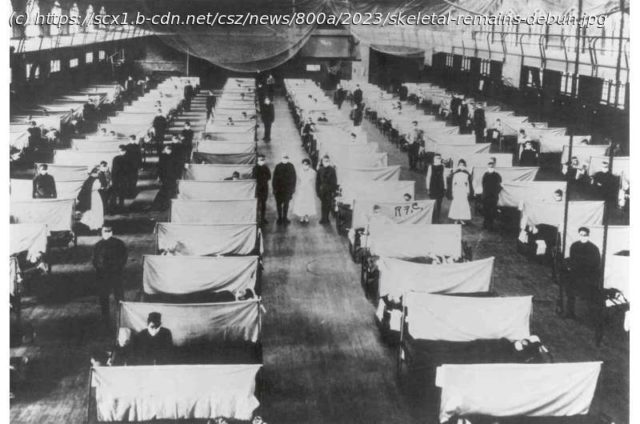Look back at the chronicle of global pandemics, and the flu pandemic of 1918 stands out as an anomaly for one reason: According to the history books, it struck healthy adults in their prime just as often, if not more so, than the weak or sickly.
Look back at the chronicle of global pandemics, and the flu pandemic of 1918 stands out as an anomaly for one reason: According to the history books, it struck healthy adults in their prime just as often, if not more so, than the weak or sickly.
This assumption has influenced research and literature for decades.
But new research published Oct. 9 in the journal PNAS suggests it may not be true at all.
In examining the skeletal remains of nearly 400 individuals, researchers from the University of Colorado Boulder and McMaster University found that in 1918—just like in 2020—people exposed to environmental, social or nutritional stressors before-hand were significantly more likely to succumb to a novel virus when it emerged.
The findings shine a light on how modern-day communities could better prepare for pandemics and reveal potential shortfalls in relying exclusively on written texts to understand the past.
« This idea that the 1918 flu killed healthy young people is not supported by our findings, » said co- author Sharon DeWitte, a professor of anthropology at CU Boulder who specializes in bioarchaeology—constructing the past via the study of human bones. « Instead, we found that this pandemic, like many others across history, disproportionately killed frail people. »
In just two years, the flu pandemic of 1918 infected nearly one-third of the world’s population and killed more than 25 million people.
Literature is filled with tragic references to it disproportionally striking the young and vibrant.
« It seems to get the big, strong ones first, » lamented one character in Thomas Wolfe’s classic flu-era novel Look Homeward Angel. « The illness seemed to be as fatal to strong adults as to young children and to the old and debilitated, » reported a U.






